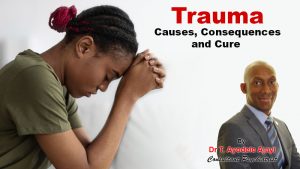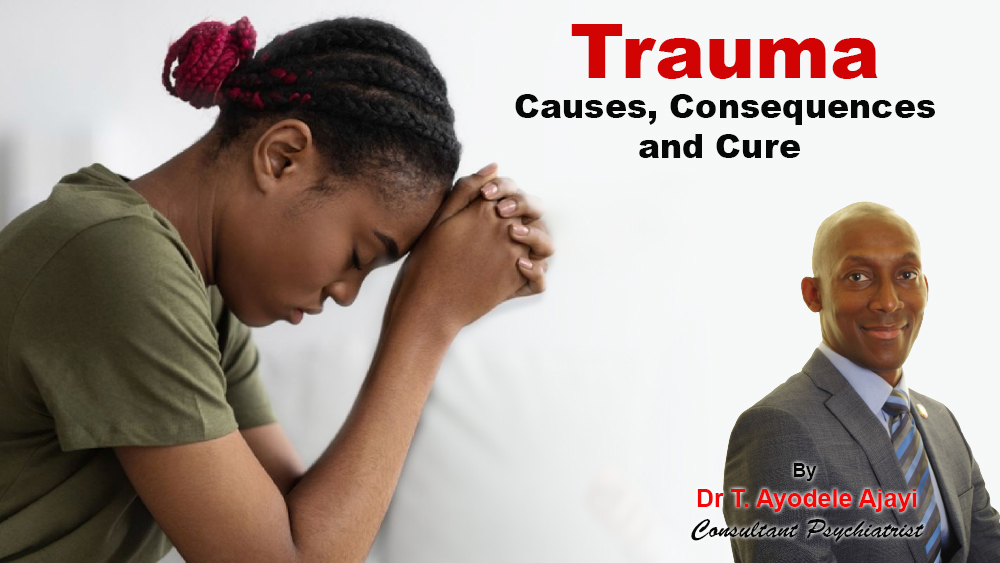Trauma: Causes, Consequences and Cure
What is Trauma?
Trauma is a term that has forced its way into our post-COVID-19 era vocabulary. Understandably so, given the hardship, the global community has experienced this decade. Trauma is a Greek word which originally means to wound or pierce. In becoming ubiquitous, there is a risk to minimise the heavy import and lose the meaning of the word. In psychological terms, trauma is a past emotional wound that affects how we live in the present and how we perceive the future. It is the psychological reaction to a traumatic event(s) wherein the experience was not well-processed.
Every one of us, at some point in our lives will either experience or know someone who has experienced trauma. These traumatic events on a personal note include bereavement, personal assault, sexual abuse or violence, bullying, domestic violence, serious accident or injury, etc. On a collective note, they include terrorist attacks, natural disasters, hostage situations, wars or threats of war. The experience can be single, multiple, repeated or chronic. What is also intriguing is the subjective perception of what is traumatic. What you perceive as trauma could be different from what I experience as traumatic.
The hallmark is that traumatic events destabilise one’s sense of safety, overwhelm the coping mechanism and generate a psychological response. Unlike ordinary hardships, traumatic events tend to be sudden and unpredictable and feel beyond a person’s control.
Adverse Childhood Experiences (ACEs)
Another form of trauma to bear in mind is one that children experience. Hence, the term Adverse Childhood Experiences is commonly used. This refers to a range of negative situations – physical, emotional or sexual – a child may face or witness while growing up. These include emotional or physical neglect; parental separation or divorce, or living in a household in which domestic violence occurs. ACEs can also include living in a household with alcohol or substance-abuser, or with family members who suffer mental disorders, or in a household with an incarcerated family member. ACEs can disrupt the normal course of development and the emotional injury can last long into adulthood. Research shows that exposure to more than 4 ACEs increases the risk of a range mental and chronic physical health problems later in life. These problems are emotional regulation, anxiety, depression, PTSD, poor school performance and suicide. Physical health problems associated with ACEs are a higher risk of diabetes, heart disease, cancers and immunosuppression. There is up to 20 years reduction in life expectancy associated with ACEs.

Vicarious Trauma
Another form of trauma is secondary or vicarious trauma. Vicarious trauma (VT) is defined as unfavourable changes, both affective and cognitive, resulting from exposure to second-hand traumatic material. (Jimenez et al., 2021b). This arises from exposure to other people’s suffering. Those in frontline caring professions notably physicians, healthcare workers, first responders, law enforcement agents, and ministers of religion at risk. Symptoms can be similar to those of primary trauma.
Effect of Trauma
Traumatic events activate the amygdala, which are almond-shaped group of nerve cells in the central part of the brain responsible for detecting threats. They play a central role in the processing and memory of emotions, especially fear. On activation, the amygdala sends out an alarm to multiple body systems to prepare for defence. This ultimately leads to the release of stress hormones – cortisol, adrenaline and noradrenaline that prepare the body for a fight-flight-or-freeze response. Fear, anxiety, anger, aggression and shock are all normal responses to trauma. Such emotions however should dissipate as the crisis abates and the experience fades from memory. In some people, the distressing feelings can linger, interfering with day-to-day life. This is when trauma becomes pathological, resulting in a range of mental health conditions including Post Traumatic Stress Disorder ( PTSD), depression and or anxiety.
On the overall, there is a need for a balanced view of trauma. Survivors need to be supported by society to get help and recover. In the converse, victims can develop unhealthy views of the world as an unsafe place. This could foster a culture of victimhood that does more harm than good by ignoring people’s capacity for growth through challenges.
A resource I recently encountered that can help believers in Christ to examine trauma with the view lens of the Christian faith is a book by Kobe Campbell- “Why Am I Like This?: How to Break Cycles, Heal from Trauma, and Restore Your Faith”. Campbell, herself described her June 2023 book as a Trauma 101 book for Christians.
In the second part of this article, I will be looking at the evidence-based effective interventions for trauma and self-help techniques to help manage anxiety.
Email me your thoughts at
tripartcare@gmail.com
or join our next Tripart Care Hub
https://tripartcarehub.eventbrite.co.uk



